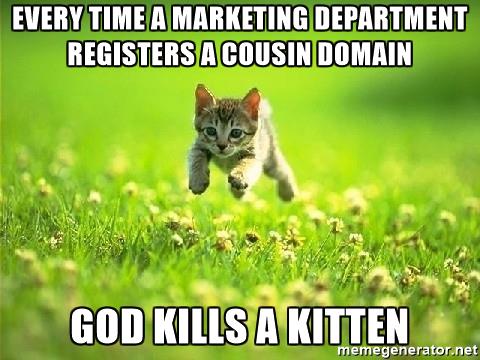It’s easy to tell if a domain is using SPF – look up the TXT record for the domain and see if any of them begin with “v=spf1”. If one does, they’re using SPF. If none do, they’re not. (If more than one does? They’re publishing invalid SPF.)
AOL are publishing SPF. Geocities aren’t.
For DKIM it’s harder, as a DKIM key isn’t published at a well-known place in DNS. Instead, each signed email includes a “selector” and you look up a record by combining that selector with the fixed string “._domainkey.” and the domain.
If you have DKIM-signed mail from them then you can find the selector (s=) in the DKIM-Signature header and look up the key. For example, Amazon are using a selector of “taugkdi5ljtmsua4uibbmo5mda3r2q3v”, so I can look up TXT records for “taugkdi5ljtmsua4uibbmo5mda3r2q3v._domainkey.amazon.com“, see that there’s a TXT record returned and know there’s a DKIM key.
That’s a particularly obscure selector, probably one they’re using to track DKIM lookups to the user the mail was sent to, but even if a company is using a selector like “jun2016” you’re unlikely to be able to guess it.
But there’s a detail in the DNS spec that says that if a hostname exists, meaning it’s in DNS, then all the hostnames “above” it in the DNS tree also exist (even if there are no DNS records for them). So if anything,_domainkey.example.com exists in DNS, so does _domainkey.example.com. And, conversely, if _domainkey.example.com doesn’t exist, no subdomain of it exists either.
What does it mean for a hostname to exist in DNS? That’s defined by the two most common responses you get to a DNS query.
One is “NOERROR” – it means that the hostname you asked about exists, even if there are no resource records returned for the particular record type you asked about.
The other is “NXDOMAIN” – it means that the hostname you asked about doesn’t exist, for any record type.
So if you look up _domainkey.aol.com you’ll see a “NOERROR” response, and know that AOL have published DKIM public keys and so are probably using DKIM.
(This is where Steve tries to find a domain that isn’t publishing DKIM keys … Ah! Al’s blog!)
If you look up _domainkey.spamresource.com you’ll see an “NXDOMAIN” response, so you know Al isn’t publishing any DKIM public keys, so isn’t sending any DKIM signed mail using that domain.
This isn’t 100% reliable, unfortunately. Some nameservers will (wrongly) return an NXDOMAIN even if there are subdomains, so you might sometimes get an NXDOMAIN even for a domain that is publishing DKIM. shrug
Sometimes you’ll see an actual TXT record in response – e.g. Yahoo or EBay – that’s detritus left over from the days of DomainKeys, a DomainKeys policy record, and it means nothing today.
Read More